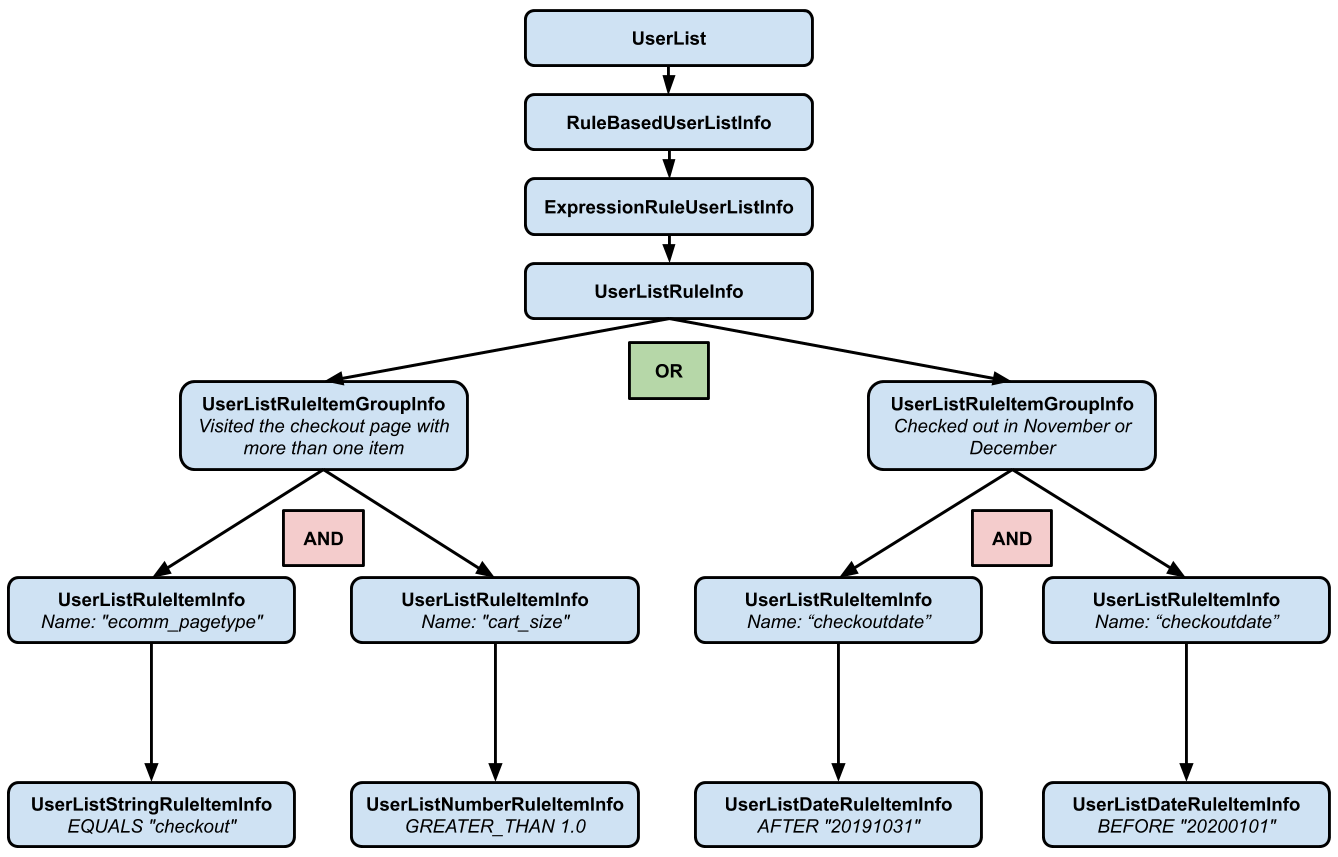AI-generated Key Takeaways
-
Rule-based user lists in Google Ads allow targeting users based on custom remarketing tag parameters like
event,cartsize, andcheckoutdate. -
You can define user segments with rules combining multiple conditions, such as users who visited the checkout page with more than one item in their cart or users who checked out during specific months.
-
These defined user segments can be used to apply bidding strategies, like increasing bids by a certain percentage for specific ad groups or campaigns.
Say you have a site where you've configured several custom remarketing tag parameters to capture the following attributes of users:
event- The category of page on your site, such as checkout, cart, etc.cartsize- The number of items in a user's shopping cart.checkoutdate- The date on which a user checked out. You only set this parameter when a user has actually completed a purchase.
You're interested in showing more impressions to users who have placed multiple items in their shopping carts and initiated the checkout process. You also want to find users who have made a purchase during November and December because you plan to have a big sale on your site during those months.
You can describe this set of users with either of the following rules:
- Users who visited the checkout page and had more than one item in their cart.
- Users who checked out during the months of November or December.
If a user falls into either category 1 or category 2, you want to increase your bids in specific ad groups or campaigns by 25%.
Objects
Take a look at the structure of a rule-based user list. A rule-based list is
represented in the Google Ads API as a
rule_based_user_list.
The following diagram shows what the
rule_based_user_list for this
use case will look like when we're done.

